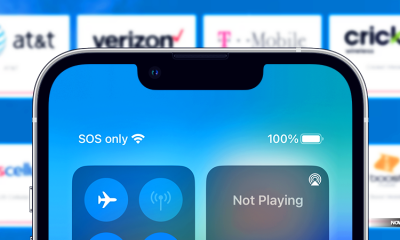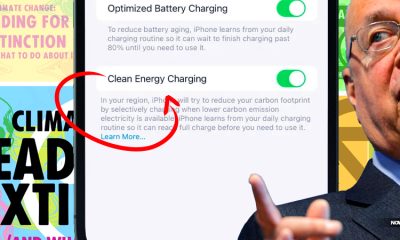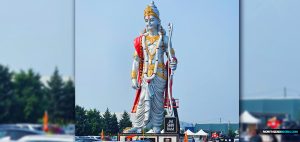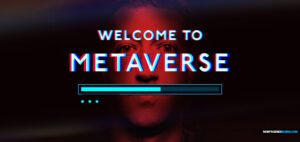Biometrics
Biometric Technology Will Make Huge Advances In 2014
The onslaught of technological coolness is dazzling, mind-boggling even. Everywhere you look there are apps and wearable devices that sync up to the cloud, and everyone is adopting them like crazy. George Orwell, in all his 1984 glory, could not have envisioned the One World Government curve ball that this would engender.
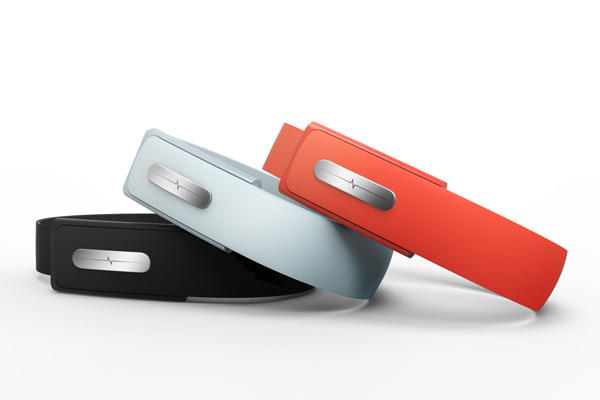
RELATED STORY: The Mark of the Beast and the Implantable RFID Chip
The onslaught of technological coolness is dazzling, mind-boggling even. Everywhere you look there are apps and wearable devices that sync up to the cloud, and everyone is adopting them like crazy. George Orwell, in all his 1984 glory, could not have envisioned the One World Government curve ball that this would engender.
We no longer have to worry about the government creating a file on us, we are making our own with every post, pic and #hashtag we launch out into the cybersphere. And when the Mark of the Beast arrives, people will jump to adopt that one as well.
Good thing that we won’t be here for that!
CS Monitor: Apple’s new iPhone 5S comes with the company’s first fingerprint scanner. A simple stamp of your thumb can now unlock the phone or confirm online purchases. No passwords are required.
While Apple fans have long awaited this big update, so has another group: the biometrics industry. Sensor companies have been wishing for a major player to swoop in, show how far the technology has advanced, and persuade shoppers that biometrics can be cool.
“Many think that the iPhone 5S is a tipping point for consumers,” says Adam Vrankulj, editor of the industry news outlet Biometric Update. After Apple purchased fingerprint-sensor company AuthenTec for $350 million in 2012, the stock price of several similar firms more than doubled.
Fingerprint sensors have come a long way since 2002, when researchers found a way to trick high-end scanners with fake gelatin fingers. Today’s technology not only reads the tiny ridge patterns, but some can also look at blood flow and vein patterns underneath the skin.
Plus, we now know that fingerprints and irises are not people’s only unique features. Scientists have devised ways to identify humans by the shape of their ears, kneecaps, and even their bottoms. A team at the Advanced Institute of Industrial Technology in Tokyo designed its rump sensor as an anti-theft measure for cars. The group claims that these prototype seats can recognize the owner’s posterior with 98 percent accuracy.
Canadian firm Bionym listens to people’s heart rhythms. While a human heart pounds at different tempos throughout the day, each person has a unique overall pattern, one based on the size and position of the heart within the body. The company’s Nymi bracelet uses electrocardiogram technology to read this heart rhythm and confirm the wearer’s identity.
Of course, biometric scanners are still far from perfect. The iPhone reportedly stumbles when it comes to wet or sweaty fingers. Mr. Vrankulj says the facial recognition software in his Android phone has a hard time with glasses and his newly grown beard – not to mention the false positives from simply holding up an image of the owner’s face.
Some have also voiced concerns about government agencies demanding the fingerprints of certain customers. Apple says such seizures would be impossible. The encrypted data stays locked up within the device, not on any of Apple’s servers. source – CS Monitor

Biometrics
Amazon Go Cashierless Stores Will Soon Allow Customers To Use Their Palms To Process Payment As World Moves Closer To Mark Of The Beast
Amazon recently filed a patent application for what it described as a non-contact biometric identification system that includes a hand scanner that generates images of a user’s palm.
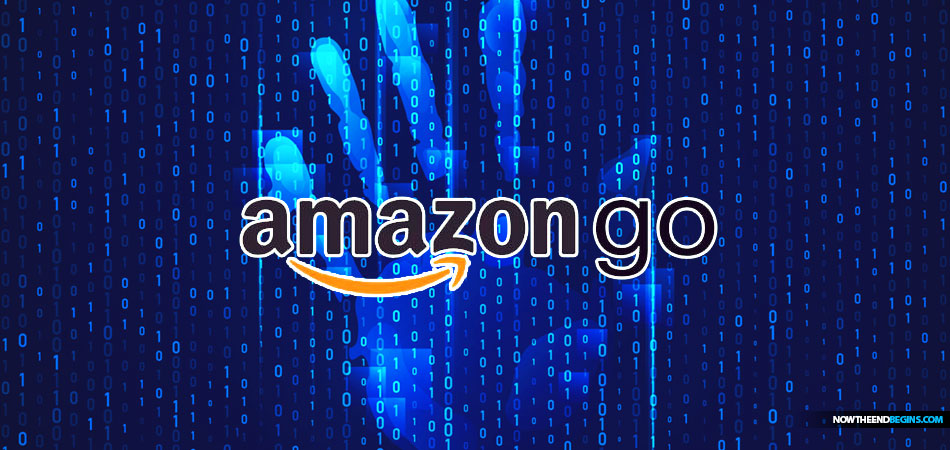
Amazon envisions that customers would first use the biometric terminals to link their debit or credit card information to their hands
We first told you back in 2018 about Amazon’s new cashierless stores called Amazon Go where you pay for your purchases using only your Amazon Go app. And at that time we warned you that using the app was only because technology had not sufficiently advanced, and what they really wanted to do was have you pay with your hand. Two years later here in 2020, and what do we see? Amazon Go and the coming palm payment. Is this the Mark of the Beast? Nope. So what is it? Training.
“And he causeth all, both small and great, rich and poor, free and bond, to receive a mark in their right hand, or in their foreheads: And that no man might buy or sell, save he that had the mark, or the name of the beast, or the number of his name.” Revelation 13:16,17 (KJB)
In the days after the Pretribulation Rapture of the Church, in the time of Jacob’s trouble, Antichrist will offer his Mark to an unsaved world, and the vast majority of them will receive it gladly on their way to Hell. But the Mark of the Beast, which the King James Bible told you 2,000 years ago is put inside the right hand, and inside the forehead, will only be the ‘latest and greatest’ biometric app in a world that is already using them when the Antichrist shows up. That’s how close we are to everything wrapping up. Amazon in their patent filing calls it a ‘non-contact biometric identification system’, sounds fancy right? Took the geniuses two millennia to catch up with what the KJB already told you in its dusty, old-fashioned and archaic English.
“Where the word of a king is, there is power: and who may say unto him, What doest thou?” Ecclesiastes 8:4 (KJB)
And that’s ‘advanced revelation’ that you will not find in the NIV and other counterfeit bibles who remove the word “in” and replace it with “on”. I think I will stick with my King James Bible, and trust the preserved word of the King.
Amazon plans terminals to let consumers link credit card information to their hands
FROM THE WALL STREET JOURNAL: Amazon.com Inc. wants to make your hand your credit card. The tech giant is creating checkout terminals that could be placed in bricks-and-mortar stores and allow shoppers to link their card information to their hands, according to people familiar with the matter. They could then pay for purchases with their palms, without having to pull out a card or phone.
The company plans to pitch the terminals to coffee shops, fast-food restaurants and other merchants that do lots of repeat business with their customers, according to some of the people. Amazon declined to comment. Amazon, like other tech companies, is trying to further integrate itself into consumers’ financial lives, leaving banks and card networks on edge. Apple Inc. introduced a credit card last year, and Google is rolling out checking accounts. If the Amazon terminals succeed, they could leapfrog mobile wallets such as Apple Pay while expanding Amazon’s already-extensive access to consumer data.
Amazon’s projects are closely watched both by tech and financial companies, which are increasingly colliding in payments. Amazon has been experimenting with payments at its Amazon Go stores, where customers can walk out without stopping to pay. It has also been building out Amazon Pay, a digital wallet that consumers can use to make payments at online merchants not owned by Amazon. Chief Executive Jeff Bezos has stressed the importance of financial services and payments to some senior executives, The Wall Street Journal previously reported.
The plans for terminals are in early stages. Amazon recently began working with Visa Inc. to test transactions on the terminals and is in discussions with Mastercard Inc., according to some of the people.
Amazon has discussed the project with card issuers. JPMorgan Chase & Co., Wells Fargo & Co. and Synchrony Financial have expressed interest in enabling consumers’ card accounts to work with these terminals, according to some of the people.
Card companies are trying to figure out whether tech giants such as Amazon intend to be collaborators or competitors, though some believe it is safer to participate in big tech’s payments ambitions than risk being left out. Amazon, for its part, wants the card companies’ expertise in safeguarding consumers’ card accounts. Still, Amazon will have to allay the concerns of card issuers and networks, including how the terminals would detect fraud. The company will also have to win over customers wary of providing even more personal information and navigate a climate in which regulators are increasingly skeptical of big tech.
Amazon envisions that customers would first use the terminals to link their debit or credit card information to their hands, the people said. The company is weighing a few options for how to do so, one of the people said. For example, customers might insert cards into a terminal and then let the terminal scan their hands. From then on, they would only need to place a hand over the terminal to pay at a participating merchant.
Amazon recently filed a patent application for what it described as a “non-contact biometric identification system” that includes “a hand scanner that generates images of a user’s palm.”
Data that would pass through the terminals, including where consumers shopped and when, would be stored on Amazon’s cloud, according to some of the people. The company would like to integrate this data with consumers’ Amazon.com spending, those people said. That could give Amazon more leverage to charge higher prices to advertisers based on the idea they can better predict what customers are likely to buy.
The New York Post earlier reported that Amazon was testing a payments system that would let consumers use their hands to pay at Amazon’s Whole Foods chain. READ MORE
Amazon Go: App Now, Palm Later
Amazon Go opened three locations in New York City – I went to the downtown location and shopped there for the first time. You download the Amazon Go app, sign in, scan the QR code, and you’re in. You literally just grab whatever items you want and walk out, and you’re automagically (see what I did there) charged for each and every item you take. It’s insane how seamless the whole experience is.
Now The End Begins is your front line defense against the rising tide of darkness in the last days before the Rapture of the Church
- HOW TO DONATE:Click here to view our GoFundMe page
When you contribute to this fundraising effort, you are helping us to do what the Lord called us to do. The money you send in goes primarily to the overall daily operations of this site. When people ask for Bibles, we send them out at no charge. When people write in and say how much they would like gospel tracts but cannot afford them, we send them a box at no cost to them for either the tracts or the shipping, no matter where they are in the world. Even all the way to South Africa. We even restarted our weekly radio Bible study on Sunday nights again, thanks to your generous donations. All this is possible because YOU pray for us, YOU support us, and YOU give so we can continue growing.
But whatever you do, don’t do nothing. Time is short and we need your help right now. If every one of the 13,131 people on our daily mailing list gave $4.50, we would reach our goal immediately. If every one of our 151,781 followers on Facebook gave $1.00 each, we would reach 300% of our goal. The same goes for our 14,500 followers on Twitter. But sadly, many will not give, so we need the ones who can and who will give to be generous. As generous as possible.
“Looking for that blessed hope, and the glorious appearing of the great God and our Saviour Jesus Christ;” Titus 2:13 (KJV)
“Thank you very much!” – Geoffrey, editor-in-chief, NTEB
- HOW TO DONATE: Click here to view our GoFundMe page
Biometrics
Are You Ready For Your Banking Password To Be Biometric Via Your Smart Phone?
Your old-fashioned banking password may be about to expire — forever.
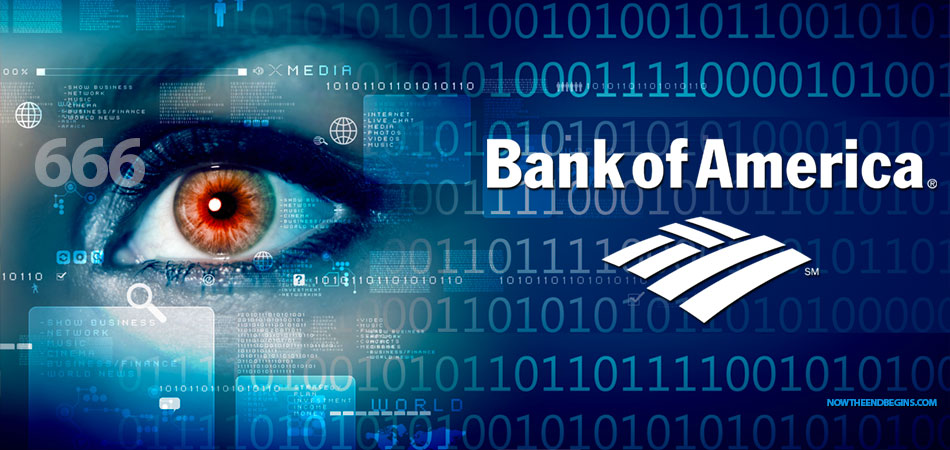
Your old-fashioned banking password may be about to expire — forever.
“And he causeth all, both small and great, rich and poor, free and bond, to receive a mark in their right hand, or in their foreheads: And that no man might buy or sell, save he that had the mark, or the name of the beast, or the number of his name.” Revelation 13:16,17 (KJV)
Some of the nation’s largest banks, acknowledging that traditional passwords are either too cumbersome or no longer secure, are increasingly using fingerprints, facial scans and other types of biometrics to safeguard accounts.
Millions of customers at Bank of America, JPMorgan Chase and Wells Fargo routinely use fingerprints to log into their bank accounts through their mobile phones. This feature, which some of the largest banks have introduced in the last few months, is enabling a huge swath of the American banking public to verify their identity with biometrics. And millions of additional customers are expected to opt in as more phones incorporate fingerprint scans.
Other uses of biometrics are also coming online. Wells Fargo lets some customers scan their eyes with their mobile phones to log into corporate accounts and wire millions of dollars. Citigroup can help verify 800,000 of its credit card customers by their voices. USAA, which serves members of the military and their families, identifies some of its customers through their facial contours.
Some of the moves reflect concern that so many hundreds of millions of email addresses, phone numbers, Social Security numbers and other personal identifiers have fallen into the hands of criminals, rendering those identifiers increasingly ineffective at protecting accounts. And while thieves could eventually find ways to steal biometric data, banks are convinced they offer more protection.
“We believe the password is dying,” said Tom Shaw, vice president for enterprise financial crimes management at USAA, which is based in San Antonio. “We realized we have to get away from personal identification information because of the growing number of data breaches.”
Long regarded as the stuff of science fiction, biometrics have been tested by big banks for decades, but have only recently become sufficiently accurate and cost effective to use in a big way. It has taken a great deal of trial and error: With many of the early prototypes, a facial scan could be foiled by bad lighting, and voice recognition could be scuttled by background noise or laryngitis.
Before smartphones became ubiquitous, there was an even bigger obstacle: To capture a finger image or scan an eyeball, a bank would have to pay to distribute the necessary technology to tens of millions of customers. A few tried, but their efforts were costly and short-lived.
Today, the equation has changed. Many models of the iPhone have touch pads that can scan fingerprints. The cameras and microphones on many mobile devices are so powerful that they can record the minute details needed to create a biometric ID.
The smartphones also provide an extra layer of security: Many biometric features will only work when used on the specific phone that belongs to the bank account holder.
“If you have your phone and you are authenticating with your fingerprint, it is very likely you,” said Samir Nanavati, a longtime biometrics expert and a founder of Twin Mill, a security software and consulting firm.
The trade-off, of course, is that in the quest for security and convenience, customers are handing over marks of their unique physical identities. After all, it is easy to change a compromised password. But a fingerprint must last forever.
Some bank executives say customers often ask whether their biometric information will become part of a private database, akin to what the F.B.I. keeps.
The banks themselves are not keeping caches of actual fingerprints or eye patterns. Rather, the banks are creating and storing what they call templates — or what amount to long, hard-to-predict numerical sequences — based on a scan of a person’s fingerprint or eyeballs. source
Biometrics
Wearable Technology Has Brought Us To The Point Of No Return
The Apple Watch represents a redrawing of the map that locates technology in one place and our bodies in another. The line between the two will never be as easy to find again.
The following is an NTEB Original Story. Please provide a link back when reposting this.
The indoctrination is almost complete and waiting for the main character to take the stage
“But thou, O Daniel, shut up the words, and seal the book,even to the time of the end: many shall run to and fro, and knowledge shall be increased.” Daniel 12:4
The world as we know it has irrevocably changed in many ways. Nearly 6 years of the Obama reign of lawlessness has wreaked unfixable havoc on our nation. Things that will never be undone, like the Marxist Obamacare that is slowly but certainly easing us off the Constitution as our basis of law. And after 20 full years of the world’s love affair with the personal computer and the Internet, we are about to change again, and it will not be for the better.
The march to “always on” is a three-fold deal. Step One was getting us in front of our devices, and getting us to fall in love with them. Have them become an indispensable part of our personal and business lives and routines. That objective has been fully realized and accomplished. Step Two is happening right now, technology is shifting from being in front of us to being on us. They call it “wearable technology”. Write it down because you are about to be bombarded by it from every aspect of your life. Just as you rarely ever see someone without their “smart device”, soon you will see just about every one wearing their smart device as a watch, nano-shirt, or beamed on our skin as in the above illustration. The list goes on and on.
Step Three will be the installation of our smart technology inside our bodies. Your pulse and venous system will act as the active recharging elements, and all functions how carried out with mouse and keyboard will be done via eye motions and voice commands.
Read this from Time magazine, and then you tell us if this is all a “conspiracy theory or not. But we already know the answer:
What might post-humanity be like? The paradox of a wearable device is that it both gives you control and takes it away at the same time. Consider the watch’s fitness applications. They capture all data that your body generates, your heart and activity and so on, gathers it up and stores and returns it to you in a form you can use. Once the development community gets through apping it, there’s no telling what else it might gather. This will change your experience of your body. The wristwatch made the idea of not knowing what time it was seem bizarre; in five years it might seem bizarre not to know how many calories you’ve eaten today, or what your resting heart rate is.
But wearables also ask you to give up control. Your phone will start telling you what you should and shouldn’t eat and how far you should run. It’s going to get in between you and your body and mediate that relationship. Wearables will make your physical self visible to the virtual world in the form of information, an indelible digital body-print, and that information is going to behave like any other information behaves these days. It will be copied and circulated. It will go places you don’t expect. People will use that information to track you and market to you. It will be bought and sold and leaked—imagine a data-spill comparable to the recent iCloud leak, only with Apple Watch data instead of naked selfies.
The Apple Watch represents a redrawing of the map that locates technology in one place and our bodies in another. The line between the two will never be as easy to find again. Once you’re OK with wearing technology, the only way forward is inward: the next product launch after the Apple Watch would logically be the iMplant. If Apple succeeds in legitimizing wearables as a category, it will have successfully established the founding node in a network that could spread throughout our bodies, with Apple setting the standards. Then we’ll really have to decide how much control we want—and what we’re prepared to give up for it.
Prepare to be chipped.
-
George Soros9 years ago
Proof Of George Soros Nazi Past Finally Comes To Light With Discovery Of Forgotten Interview
-
Election 20169 years ago
DEAD POOL DIVA: Huma Abedin Kept Those Hillary Emails That The FBI Found In A Folder Marked ‘Life Insurance’
-
Election 20169 years ago
Crooked Hillary Campaign Used A Green Screen At Today’s Low Turnout Rally In Coconut Creek FL
-
George Soros9 years ago
SORE LOSER: George Soros Declares War On America As Violent MoveOn.Org Protests Fill The Streets
-
Donald Trump9 years ago
Donald Trump Will Be 70 Years, 7 Months And 7 Days Old On First Full Day In Office As President
-
Headline News9 years ago
If Hillary Is Not Guilty, Then Why Are Her Supporters Asking Obama To Pardon Her? Hmm…
-
Election 20169 years ago
WikiLeaks Shows George Soros Controlling Vote With 16 States Using SmartMatic Voting Machines
-
End Times9 years ago
False Teacher Beth Moore Endorses The Late Term Partial-Birth Abortion Candidate Crooked Hillary
